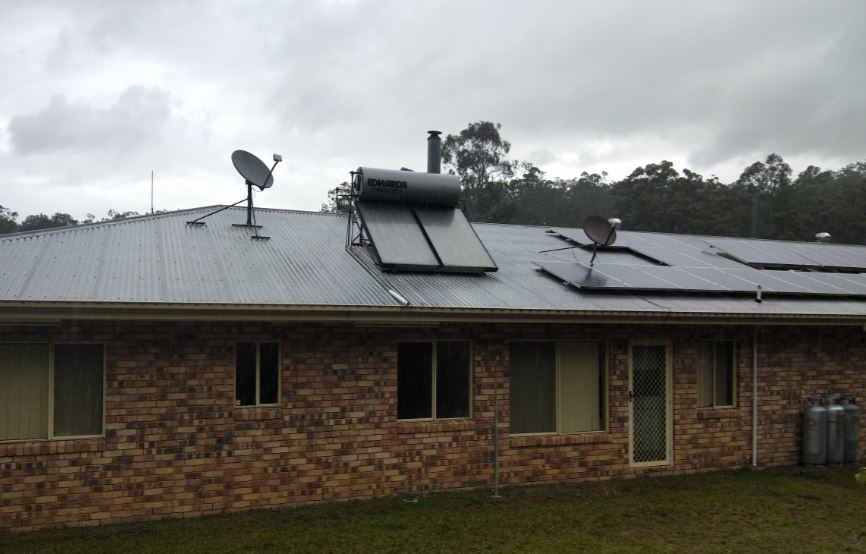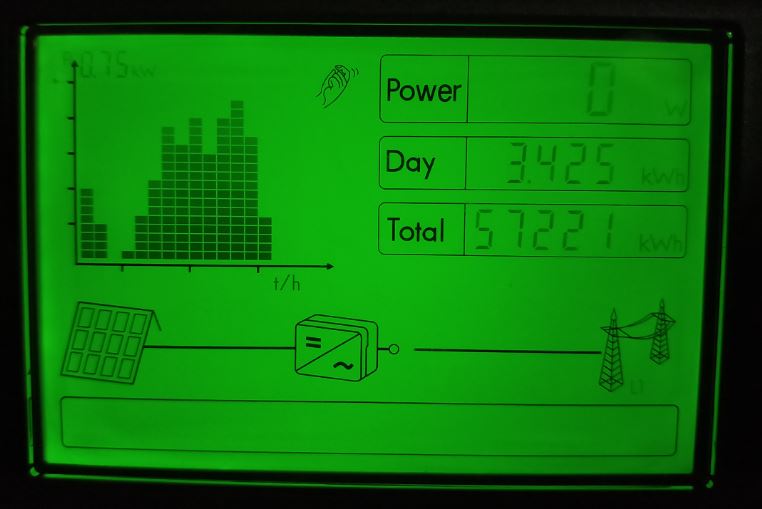 It’s Not All Beer And Skittles, …
It’s Not All Beer And Skittles, …
Some days are diamonds and some days it just buckets down. That’s right, … it’s not all beer and skittles.
For one quarter of the population who have solar panels on their roof, an overcast day is not a good day out. It’s even worse for those who have a stand-alone system because a couple of days in a row without sun means that the genset needs to be started.
Whether you have a diesel or a petrol generator, this is the most expensive way to buy a kilowatt hour of electricity especially when you’ve already spent so much on solar panels to generate electricity for you.
Like it or not the only thing you can be certain about is that you can’t be certain about anything and one of those “anythings’” is the weather.
For people without solar panels gracing their roof, a couple of weeks of overcast weather is merely an inconvenience. For those who do have solar panels those same weeks are an expensive inconvenience. For families on stand-alone systems, overcast weather is a very expensive inconvenience.
Weather like this extends payback time. Families who have only a battery bank for their electricity supply generally tend to cycle their batteries even harder during these times. That is, more power is pulled out of the batteries than normally would be taken before recharging occurs.
Discharging the industry standard lead-acid deep cycle batteries more than 20% significantly reduces their life expectancy. We do however need rain in due season. Since the seasons are generally quite predictable, most people are set up for the inevitable.
The first photograph shows the back of our house on a dismally overcast day. The sun should be shinning on the northern wall and flooding through the windows. Sadly that is not the case.
Generally the clouds tend to keep what ambient heat there is contained reducing the chance of night-time temperatures plummeting. Of course, even in a correctly orientated and designed home, without any sun exposure at all, the internal ambient temperature of any home will continue to drop especially this time of the year being two days after the winter solstice.
The winter solstice is the shortest day of the year. The computer modelling on our home advises that inside temperatures should not be any colder than 17.5 degrees at any time, and should only happen for three and a half days every year. Of course in the real world things can be a little different.
After a week or so of quite low external temperatures and very few peak sun hours, the internal temperature of our home got down to 16 degrees which we Queensland’s tend to think is a little chilly.
The sun didn’t get the opportunity to shine through the windows onto the internal bricks. Whilst the concrete slab is always working hard to make the inside ambient temperature 23 degrees C, without the sun shining the bricks continue to drop in temperature.
That’s the second law of thermodynamics at work. So what exactly is a peak sun hour (PSH)? Uninterrupted sunshine falling on one square metre for one hour will ideally deposit 1000 watts of energy within that area. On an absolute perfect day, that can happen but the reality is that it rarely does happen.
Even on what one might call a perfect day, it may take an hour and a half to have one peak sun hour of energy fall on the family’s roof. Even then there are other factors that come into play further reducing the amount of energy falling on the roof, that is, the solar panels on the roof.
It’s not just clouds that block the sun, but also the accumulated dust on the panels, or the tree in the neighbour’s yard or the tall building across the street or any number of other factors. In an ideal environment with correctly orientated solar panels at an angle calculated on the latitude of location and seasonally adjusted, that is an added 15 degrees of tilt in the winter and 15 degrees less tilt in the summer, solar exposure through the seasons can vary as much as 100% from winter to summer.
Statistically speaking, solar exposure in the vicinity where we live on the southern end of the Sunshine Coast in Queensland, can be lower than 3 (PSH) Peak Sun Hours per day during winter to as much as almost 8 (PSH) Peak Sun Hours per day during summer.
However, generally the differences are not that extreme delivering an average of a little less than 4 (PSH) Peak Sun Hours per day during winter and a little less than 7 (PSH) Peak Sun Hours per day during summer. Even though there is more solar exposure during the summer time, ie more PSH per day, efficiency drops off as the temperature rises.
Because solar panels perform better with the cooler temperatures that winter brings, the amount of solar collection either stored in a stand-alone system or exported to the grid may only vary by 20% from peak season to peak season. Our system can frequently export an average of 21 kilowatt hours per day into the grid.
It becomes very difficult to maintain that average when a couple of weeks
of seriously overcast weather sets in and only allows the collection of only
3.4 kWh for the whole day as shown in the second picture >>> LEARN MORE >>>
Since we use possibly 2kWh through the day there’s not much left for export and without the sun heating up our internal bricks to store heat, even a thermally well designed home like ours performs poorly under these circumstances. The good thing is that these conditions are not that frequent and usually not that sustained.
John Lynn
suburbanoffgridliving.com

